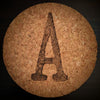Illuminating the Past: A Journey through the History of Candle Making
Introduction
Candles have served as a source of light and warmth for centuries, shaping human history and culture in numerous ways. From humble beginnings using natural materials to the modern-day scented and decorative candles, the history of candle making is a fascinating tale that spans civilizations and epochs. Join us on a journey through time as we explore the evolution of candle making, from its earliest origins to its present-day forms.
Ancient Origins
The art of candle making can be traced back to ancient civilizations. The earliest known candles were likely created by the ancient Egyptians around 3000 BCE, who used reeds soaked in animal fat to produce a rudimentary light source. These early candles were far from perfect, emitting a smoky and inconsistent flame.
The Classical Era
As civilizations developed, so did the methods of candle making. In ancient Rome, candles were made from tallow, a byproduct of animal fat. This innovation led to candles with a more reliable and less smoky flame, improving illumination for both daily tasks and religious ceremonies. The Romans also utilized various materials such as beeswax, which burned cleaner and emitted a pleasant aroma, reserved for special occasions.
Middle Ages and Renaissance
During the Middle Ages, candle making continued to evolve, becoming an important trade. Guilds and artisans refined the process, leading to the introduction of molds that allowed for more consistent candle shapes. Beeswax candles gained popularity in religious contexts due to their purer burn and association with spirituality.
The Industrial Revolution
The 18th and 19th centuries marked a significant turning point in the history of candle making with the advent of the Industrial Revolution. Innovations in manufacturing, including the invention of the steam engine, allowed for the mass production of candles. Stearine, a refined form of animal fat, was discovered, providing a more stable and less smoky alternative to tallow. This era also saw the emergence of paraffin wax, derived from petroleum, which further revolutionized candle making due to its cost-effectiveness and versatility.
Modern Era
The 20th century brought about even more advancements in candle production. Electricity and electric lighting diminished the practicality of candles as a primary light source, leading to their transformation into decorative and symbolic items. Scented candles gained popularity for their ability to create a specific ambiance, while various shapes, colors, and sizes allowed for personalization and artistic expression.
In recent decades, the resurgence of interest in handcrafted and natural products has revitalized traditional candle making techniques. Artisans and enthusiasts have embraced the use of natural materials like soy wax and essential oils, prioritizing eco-friendliness and health-consciousness.
Conclusion
The history of candle making is a testament to human ingenuity and adaptability. What started as a simple source of light has evolved into a symbol of ambiance, celebration, and creativity. From the flickering flames that illuminated ancient tombs to the scented candles that set the mood in modern homes, candles have played a significant role in shaping human experiences and cultures throughout history.
As we continue to celebrate the art of candle making, let us remember the journey that has brought us here. From the crude reeds of ancient Egypt to the sophisticated soy and coconut creations of today, the history of candle making reflects our pursuit of both functional illumination and artistic expression.

